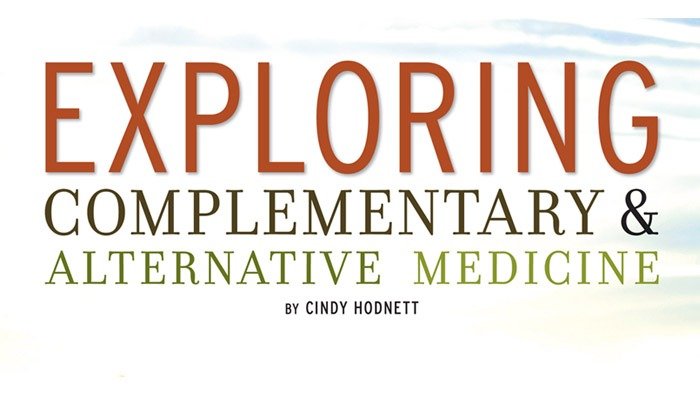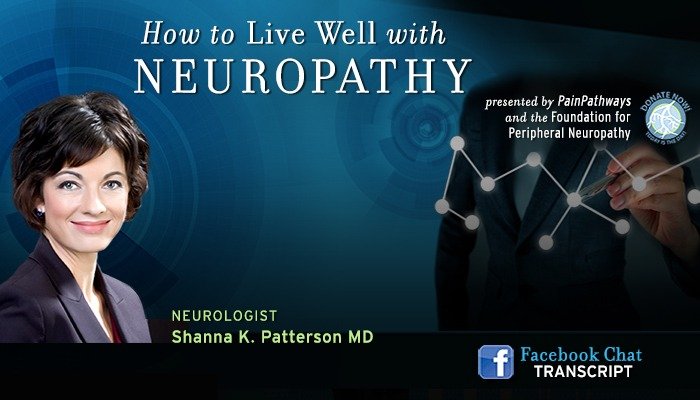Exploring Complementary and Alternative Medicine

Misconceptions about complementary and alternative medicine (cam) are pervasive. From the idea that the treatment approaches are unproven to the assumption that cam providers are not medically trained, erroneous beliefs often prevent people from exploring these potentially beneficial therapies. Bettina Herbert, MD, Director of the Integrative Pain Management Program at the Jefferson-Myrna Brind Center of Integrative Medicine, thinks that dispelling the fallacies begins with education.
“The more people learn about CAM, the more they understand about how well this approach helps manage pain. At our center we use only evidence-based medicine,” Herbert says. “What we practice is called integrative medicine — a combination of complementary and alternative medicine as well as conventional medicine. People may be surprised to learn that many medical residencies now include integrative medicine training.”
DEFINING CAM
The National Center for Complementary and Alternative Medicine (NCCAM), a division of the National Institutes of Health (NIH), defines CAM as “a group of diverse medical and health care systems, practices and products that are not generally considered part of conventional medicine” and notes that the boundaries between CAM and conventional medicine are not absolute. Over time, in fact, CAM practices can become widely accepted.
“The more people learn about CAM, the more they understand about how well this approach helps manage pain. “Complementary medicine” refers to use of CAM together with conventional medicine, such as using acupuncture in addition to usual care to help lessen pain. Most use of CAM by Americans is complementary. “Alternative medicine” refers to use of CAM in place of conventional medicine. “Integrative medicine” combines treatments from conventional medicine and CAM for which there is some high-quality evidence of safety and effectiveness. It is also called integrated medicine.”
“CAM is a broad umbrella term that encompasses many different treatments, and each CAM treatment health condition pairing needs to be evaluated individually using systematic reviews of randomized controlled trials,” says Eric Manheimer, research associate at the Center for Integrative Medicine at the University of Maryland School of Medicine. “The systematic review is widely accepted as the most reliable and objective method for evaluating health care treatments. Systematic reviews use explicit, transparent and well-documented methods to find, evaluate and synthesize the best available randomized controlled trials (RCTs) related to a specific research question.
“The boundaries between CAM and conventional medicine are not always clear-cut, may change over time and may be dependent on the geographical location,” Manheimer continues. “For example, osteopathic medicine was founded in the late 19th century as a form of holistic medicine that relied largely on the manipulation of bones and joints. By the middle of the 20th century, the osteopathic profession had moved closer to mainstream medicine. Today, osteopathic physicians in the United States use conventional methods of diagnosis and treatment, and have the same full practice rights as MDs in all 50 states. However, while osteopathy is now largely viewed as part of conventional medicine in the U.S., it is still perceived as CAM in most European countries.
“Some interventions — acupuncture, for instance — would be accepted as CAM by virtually everyone,” Manheimer explains. “Interestingly, while acupuncture is considered a CAM intervention, at least in Western countries, it is often provided by practitioners of conventional medicine (e.g., MDs or physiotherapists). Acupuncture is delivered by 6,500 physiotherapists in the United Kingdom and by about 40,000 conventionally trained physicians in Germany. Other conventionally trained practitioners often collaborate with or refer patients to acupuncturists.”
CAM DEBATE AMONG SPECIALISTS
Even in the medical community, there is debate over classifying certain treatments as CAM. Manheimer explains that some physicians prefer not to use the term complementary/alternative medicine, but rather identify health care treatments only as effective or ineffective. Some authorities in the pain community assert that defining therapies as either CAM or conventional is “an artificial distinction,” says Manheimer.
RELATED: Integrative Medicine and What it Has to Offer to You
“Physicians have questioned whether it makes sense to define an umbrella category of CAM, when, for example, homeopathic remedies and probiotics — two therapies that might be grouped under this all encompassing category of CAM — have different levels of demonstrated efficacy, different levels of plausibility for their proposed mechanisms of effect and different levels of acceptance,” he says.
WHEN TO USE CAM
Dr. Herbert believes that both complementary/alternative and conventional medicines play an important role in the treatment of illness, disease and chronic pain.
“Mainstream medicine is wonderful at saving lives,” she says. “If I’m in a car accident, I’m going to the emergency room. But in other situations, the focus of conventional medicine is on controlling symptoms instead of looking for causes.
“Complementary and alternative medicine requires more effort on the part of the doctor and the patient,” Dr. Herbert continues. “But people often feel empowered when they take charge of their own health.”
As one example, Dr. Herbert mentions a diagnosis of high cholesterol. While conventional medicine practitioners might recommend the use of Lipitor, a drug commonly prescribed to reduce cholesterol levels, an integrative medical provider might recommend the elimination of red meat from the diet as part of the treatment approach. Although this example might be somewhat simplified, Dr. Herbert says it illustrates the integrated perspective as CAM physicians explore solutions. It’s important to remember that it’s the patient who determines if CAM is effective.
“If someone has migraine headaches, anxiety and muscle spasms,” Dr. Herbert says, “and they see three different doctors for each of these symptoms, it might be difficult to link them. Instead of managing them as separate conditions, it could be that all three of the symptoms are caused by a magnesium deficiency. Adding magnesium rich foods might improve all three symptoms without any side effects. Integrative medicine looks at the whole person.”
One of the biggest misconceptions about complementary and alternative medicine is that it is viewed as “on the fringe, avant-garde or risky,” Dr. Herbert continues. In fact, many CAM therapies are less invasive or have very few side effects when compared to conventional treatments.
“I would suggest that complementary/alternative medicine is more conservative than conventional medicine,” she says. “Consider an individual who has a pinched nerve in his neck. One of the standard conventional treatments would be a steroid injection in the neck, which comes with some risks. Complementary treatments might include trying an anti-inflammatory diet or acupuncture. These treatments are more time-consuming, but there is no risk from injecting a needle near the spine.”
Dr. Herbert states that many academic medical centers agree that pain is one of the most receptive conditions to integrative medicine. She adds that complementary/ alternative therapies often incorporate mind-body treatments.
“There is not one pain cortex; it is a collection, a matrix within the brain,” says Dr. Herbert. “There is an emotional component to pain: pain is exhausting and robs you of hope. CAM providers address this aspect of pain by rekindling hope, and this motivates the patient to make changes.”
COST BENEFITS
Although it’s difficult to calculate, studies suggest that complementary and alternative medicine is more cost effective than conventional treatments.1 As health care costs continue to rise, consumers are giving complementary and alternative therapies a closer look.
“The recession has forced us to take responsibility for our finances,” Dr. Herbert says. “And part of the problem with the current health care system is that people have been discouraged from taking responsibility for their health.
“When you are talking about institutions, money rules,” she continues. “If you prove that these interventions are cost effective, insurance companies will become more open to them.”
According to Dr. Herbert, the very large number of people in the “boomer bubble” (individuals born between 1946 and 1964) is also likely to boost the use of complementary and alternative medicines. As these individuals seek non-invasive, non-pharmacological treatments for the types of ailments that often accompany aging, CAM therapies are expected to gain in popularity.
“This group of aging Americans doesn’t want to go quietly into old age. When they experience the aches and pains that go along with aging, I think they’ll be open to trying new options,” she adds.
“One of my mentors phrased it best when he said, ‘I hope to die young at a very old age,’” concludes Herbert. “People know that there has got to be a better way to improve the quality of their lives, and complementary/alternative medicine is one answer. I see the successes all day, every day.”
PainPathways Magazine
PainPathways is the first, only and ultimate pain magazine. First published in spring 2008, PainPathways is the culmination of the vision of Richard L. Rauck, MD, to provide a shared resource for people living with and caring for others in pain. This quarterly resource not only provides in-depth information on current treatments, therapies and research studies but also connects people who live with pain, both personally and professionally.
View All By PainPathways






